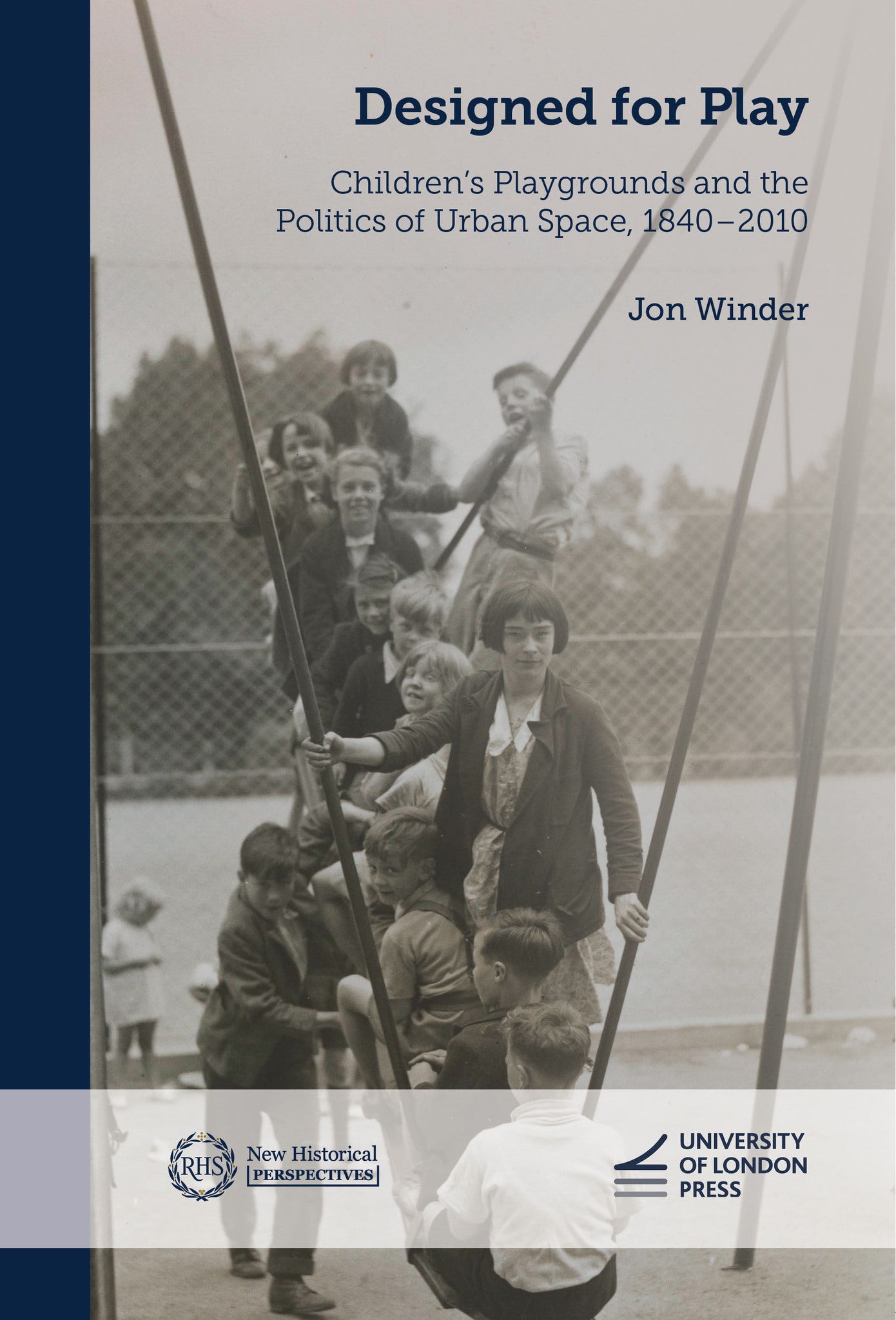We're sorry. An error has occurred
Please cancel or retry.
Designed for Play: Children’s Playgrounds and the Politics of Urban Space, 1840–2010

Some error occured while loading the Quick View. Please close the Quick View and try reloading the page.
Couldn't load pickup availability
- Format:
-
11 July 2024

Children’s playgrounds are commonly understood as the obvious place for children to play: safe, natural and out of the way. But these expectations hide a convoluted and overlooked history of children’s place in public space – one shaped by implicit social, political and environmental values, and by government intervention in spaces and lives across the nineteenth and twentieth centuries. This book is the first empirically grounded historical account of the modern playground, drawing on the archival materials of social reformers, park superintendents, equipment manufacturers and architects in Britain and beyond to chart the playground’s journey from marginal obscurity to popular ubiquity. In exploring the evolution of play space design, the book shows that the ideal playground has long represented a space where changing conceptions of nature, health, childhood, commerce and technology have all been played out. It covers the development of garden gymnasiums in the 1890s, the influence of Charles Wicksteed, increasing standardisation in the interwar period, the impact of progressive education, pioneering female designers and the adventure playground movement in the twentieth century, and more recent challenges to the playground’s status as a site of health, nature and safety.
Designed for Play is an original and accessible contribution to modern British history, urban and environmental history, and histories and geographies of childhood.

HISTORY / Historical Geography, Social and cultural history, SOCIAL SCIENCE / Children's Studies, SOCIAL SCIENCE / Sociology / Urban, Urban and municipal planning and policy, Social geography

‘Jon Winder’s Designed for Play shows us how our playgrounds are the product of the vying interests of educationalists, manufacturers, local governments, philanthropists, even, very occasionally, children. It is a beautifully told and compelling tale that treats the playground as a major element of urban life. This is an important book that deserves a very wide audience.’
— Ben Highmore, Professor of Cultural Studies, University of Sussex, UK
- Introduction
- 1 Finding Space for Play: ‘playgrounds for poor children in populous places’
- 2 Competing Playground Visions: ‘a distinctly civilizing influence that gives much health and happiness’
- 3 Playgrounds for the People: ‘a magnetic force to draw children away from the dangers and excitements of the streets’
- 4 Orthodoxy and Adventure: ‘playgrounds are often as bleak as barrack squares and just as boring’
- 5 Playground Scuffles: ‘It’s ours whatever they say’
- Conclusion



